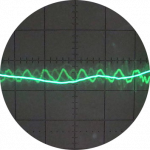MCS heat pump pre-sale information and performance calculation
I’ve read the MCS 031 Issue 4.0, which proposes using EPC data and generalised methods for heat pump sizing. I find it concerning as EPCs are often inaccurate, and the approach seems too generic for diverse housing. This risks misinformed installations and poor system performance, and I feel personalised heat loss surveys and accurate data are crucial for success.
Link to the doc: MCS 031 Issue 4.0
What does everyone else think?
Get a copy of The Ultimate Guide to Heat Pumps
Subscribe and follow our YouTube channel!
My reading is this:
Its headed 'pre sale' and says its for use 'in conjunction with MIS 3005D.'
MIS 3005D specifies that a heat load calculation must be performed. It doesnt say how so far, as I can see, but it does specify minimum target temperatures.
In the initial quote/estimate phase doing a full survey is overkill and expensive. Most installers will charge ~300 and no householder will want to pay multiple times ~300 just to get a first estimate from the several contractors that we would encourage them to approach. This being the case I think that reliance on the EPC at the pre sale stage is acceptable in terms of accuracy. The option to use a 'proper' (GIGO) heat loss calculation pre-sale is preserved because the EPC is not mandated in MCS031 where such a calculation has been done.
Taking this all together I think that this aspect of MCS031 is OK. Unless that is I have misread something.
4kW peak of solar PV since 2011; EV and a 1930s house which has been partially renovated to improve its efficiency. 7kW Vaillant heat pump.
Rubbish in = rubbish out.
EPCs are not reliable with too many assumptions at the discretion of the energy assessor.
I downloaded the MCS 031 system performance estimate tool, didn't work on my personal laptop, OK on work PC. It's coming up with a grossly undersized ASHP of 6,43kW however, and a very low heat load of 42W/m2 based on my EPC data. I know the true value is much nearer to 60W/m2.
The room-by-room heat loss calculation for my property was 10.01kW, vs my own calculated estimate of about 9kW.
I have a 10kW ASHP which does struggle in winter to maintain 21degC DiT at temperatures approaching -3.7degC DoT. I think this due to frequent defrosts reducing the integrated capacity to around 8.5kWh plus thermal losses due to non-insulated piping in floor voids, LLH, etc. MCS don't make any provision for these typical and unavoidable inefficiencies and thermal losses in their latest MCS 031 Ver 4.0 sizing method.
Whilst I totally agree that an accurate heat loss determination is absolutely essential (and have made many comments about how unsatisfactory the current methods can be), the question is when. Note that MCS031 is expressly about pre-sale not post sale, which is covered by MIS 3005-D.
A typical customer might seek initial quotes/estimates from at least 3 and possibly 10 installers, and may then not go ahead at all. Its unreasonable to expect an installer with <1 in 10 chance of getting the business to do fabric survey, taking perhaps 3 hrs, free of charge at this stage, and if they do, those who do use that installer will have to pay the costs of those who don't!. Its equally unreasonable to ask customers to shell out the costs of several such surveys just to get a quote. This being the case there is clearly a role for an 'approximate' stage of the process and the EPC is probably as good as anything at this stage. This being the case and as I say above I am of the view that MCS031 is acceptable for the purpose described and (as it says) when read in conjunction with MIS 3005-D.
A difficulty (which I cant actually see how to resolve) arises later on, when the customer has narrowed down his/her choice of installer, perhaps to one with a backup, and is reasonably committed to proceed. Naturally he/she wants an absolutely firm quote before finally committing, and to give one does need a proper heat loss determination. At this stage the EPC is not adequate and the standard approach, a heat loss survey, remains costly given that the householder still has an option not to proceed. We almost need a 'subject to contract' stage of the proceedings to share risk equitable. MCS 031 doesn't address this, so I guess installers and customers are free to work out how best to proceed, which I think, on balance, is not unreasonable.
4kW peak of solar PV since 2011; EV and a 1930s house which has been partially renovated to improve its efficiency. 7kW Vaillant heat pump.
@jamespa Probably why some installers state a fee for the survey that is refundable if you then go ahead with an installation through them. (Graham Hendra makes these very points in a recent RHH Q&A podcast). Regards, Toodles.
Toodles, heats his home with cold draughts and cooks food with magnets.
Perhaps develop a basic software, free online that allows the customer to put in most of the measurements and basic building fabric, just enough that the information is better than relying on an EPC and then ask your 3 contractors by sending them a link or a copy of what you managed to fill out and then ask "based on my own calculation assume 7kW" please give me your best price.
I am sure not everyone can do it but a lot of people could measure a space, radiator, check if they have 50mm or 300mm of insulation in the loft, take a short video of the areas where the installation will happen and send it in to 3 companies for a free heat calc top up, they complete most, the specialist fills in the gaps on the same form.
There are many very basic items of information that would help the installer decide on a more accurate price that over 70% of the customers could gather and then a contract could be produced based on subject to final design, the installer knowing they have won this job at that stage could do the full heat loss assessment at that point free of charge which would not be free of charge as it would be included in the overall price.
Its also worth noting that most customers don't want to be told these are your 3 prices 10K 11K and 14K, they go with the cheapest and find that the cheaper quote now is 13,700 after the assessment so it was not an informed decision as they could have had the better branded system rather than the cheapest poor systems on the market for the same price.
One more thing to remember, the market demand is so far outstripped V skilled worker most installation companies are booked for months and its a small ask to pay £300 3 times so that you have choice when the government gave you £7,500 towards the costs, perhaps consider that not all of the grant is for the install but also to allow you to get 1, 2 or even 3 designs so you are informed. Imagine by getting the best design and the best installation you probably saved £5,000 per year by not wasting energy with the wrong design.
Designs and installation should be perfect I hear you say? Well thats not how the world works unfortunately, it has never worked perfectly in this country or elsewhere I am sure for housing, plumbing, heating, electricity and any other service right down to the trains running on time for £100 a ticket.
AAC Group Ltd covering the Kent Area for design, supply and installation of ASHP systems, service and maintenance, diagnostics and repairs.
Professional installer. Book a one-to-one consultation for pre- and post-installation advice, troubleshooting and system optimisation.
I've been lurking in the shadows for some weeks now and have climbed a long way up the learning curve thanks to these discussions - so first of all thank you all. Am I right in thinking that the heat loss calculation is done to establish, at least in theory, the amount of energy that is required to heat a property, to put it simply? If however your gas bill tells you how much energy you use why do you need to theorise? And does solid knowledge of how much energy goes in trump the figure that comes out of a heat loss calculation? I find it all very confusing as I'm being told my heat loss is either 13.53 kwh or maybe 14.4kwh with one bid of 15.7kwh. My gas usage amounts to c28,000 kwh p.a. in a 200 sqm property with good roof insulation, double glazing, no wall insulation to speak of - half Victorian 9 inch brick and half 1970s cavity.
Posted by: @nogotonyAm I right in thinking that the heat loss calculation is done to establish, at least in theory, the amount of energy that is required to heat a property, to put it simply?
Yes, precisely that (at a specified outdoor temperature)
Posted by: @nogotonyIf however your gas bill tells you how much energy you use why do you need to theorise? And does solid knowledge of how much energy goes in trump the figure that comes out of a heat loss calculation?
A question I have been asking quite loudly (on this forum and elsewhere) for a year or more, with varied reactions from people in the industry and others.
There are of course problems with both methods.
- The MCS fabric method makes assumptions about the fabric which may be way off the reality, particularly in older retrofits which have been subjected to multiple upgrades/extensions. The method also assumes an air change rate which is much higher than the actual figure is at least some instances, possibly most.
- Using gas bills tells you how much energy you have used, but you dont know the efficiency of the boiler which could be anywhere between 75% and 110% (although you can make a pretty good guess). Also the installer doesn't know how it has been heated and, whilst with a gas boiler short sharp heating is possible that is not the case with a heat pump (although this could all be worked out if you have half hourly readings, and anyway makes less difference to total consumption that many might think)
My personal view remains that gas consumption is almost certainly, for a retrofit in a house that has been modified, a better method than the GIGO fabric spreadsheet. Installers do vary, some will insist on using the fabric spreadsheet exclusively with the MCS default assumptions, and ignoring any fabric upgrades that they cant see (for example internal wall insulation). Others, while obliged by the MCS rules to do the calculation using the fabric, will take into account invisible fabric upgrades and take a view on air changes depending on other evidence including gas consumption.
I had two three hour surveys and both came up with 16kW. I had paid for one so asked for the detail, they had ignored the fabric upgrades they couldn't see (I had made a point of telling the surveyor about them) and double counted room to room losses. I then plugged the correct fabric (as best I know it) into a spreadsheet with the standard MCS assumptions and got to 10.5kW. The measured loss based on gas consumption is 7 - 7.5kW, based on 2 years smart meter readings analysed various ways. The difference between this and 10.5 can be accounted for by air changes.
I used the latter to size my heat pump, so specified the Vaillant '7kW' model which actually does 8.4 @ -2. I successfully convinced two installers to take it into consideration. Both were already of the opinion that the ACH values normally used are far too high, so didn't take much convincing! However I've only had the heat pump 3 weeks so I cant yet be absolutely certain it was the right decision (but I'm not in the slightest concerned because I have enough evidence to be pretty convinced!)
My personal hope/suspicion is that the likes of Octopus will work out how to analyse the very rich data present in half hourly meter readings in various ways to take out most of the residual uncertainties in the use of gas consumption, and that this will become an accepted method. The industry appears to be quite resistant however. I fear that this is because the fabric method generally over-sizes, so at least the householder wont be cold and, because its mandated, so long as the installer follows the rules they are bullet proof if it all goes wrong. That would, however, be a cynical view.
The difference between 13.5 and 15.7kW isnt that much (but mine were both 16 and wrong by a factor of 2). 28MWh/year suggests 9kW - 16kW depending on where you are, your boiler efficiency etc. The most important question might be is it below 12kW at which point single fan models become possible. If you have half hourly meter readings for a season plot against OAT or degree days and/or do 3 hrly averages and eyeball them to see what the peaks are. Also take a view on a sensible efficiency for your boiler. If its new and actually condensing (no or rare plumes of vapour from the flue) it might be 110%. Its probably ~90-95% if its a condensing boiler but not actually condensing (the norm in the UK, sadly). If its older, then it might be as low as 75%. Put all this data together to give you more confidence and focus on which thresholds drive design bifurcations. Its not necessary to get it exactly right, but if its the difference between a model that fits in the space available or needs planning consent, and one that doesn't, then the difference becomes material.
4kW peak of solar PV since 2011; EV and a 1930s house which has been partially renovated to improve its efficiency. 7kW Vaillant heat pump.
My house was given an EPC rating of B, which I felt was generous, because the process doesn't take account of some of the thermal deficiencies such as those set out in the Thermal Bridging Guide (a fine document which, unfortunately, doesn't include guidance on retro-fitting solutions). I had been monitoring my gas consumption for several years although that needed to be used in the context of how the house was heated (mornings and evenings plus in the middle of the day if very cold) which doesn't easily translate to the near-steady heating provided by a heat pump with higher temperature for longer resulting in more losses. I also had the data on the variation of gas consumption with outside temperature. However, my primary bit of homework was my thermal analysis spreadsheet looking at overall heat losses so it was easy to compare that with the installer's initial offer for heat pump sizing and see that it was in the right range. Their full assessment subsequently confirmed this was OK.
As installers accrue more experience it should be possible for them to just look at a house, take account of the size and era of the orginal construction and any subsequent thermal improvements (which should be reflected in the EPC) and immediately give a good estimate for the capacity of heat pump needed subject to the constraints of the product range they use. They should also point out that the overall performance will be influenced by having generous emitter capacity in order to keep the flow temperatures low.
Posted by: @nogotonyIf however your gas bill tells you how much energy you use why do you need to theorise? And does solid knowledge of how much energy goes in trump the figure that comes out of a heat loss calculation?
Your annual gas consumption on its own isn't enough. You need to know WHEN the gas is used to a very good time resolution so that you can determine the peak rate of gas consumption. Once you have converted the peak volumetric rate into a power value and decided what boiler efficiency figure you are going to assume, you then need to confirm that the ASHP (as well as the plumbing and radiators) can deliver energy at the same rate. @jamespa's last paragraph is crucial. Although I have half-hourly data for gas consumption and outdoor temperature going back several years, I've found that a month or two's data at this time of year is sufficient to provide a graph that can be extrapolated to give required the necessary ASHP rating at whatever peak indoor-outdoor temperature differential you wish. Potential items to consider are a) the accuracy of your historic gas consumption data may be impaired if room set temperatures were routinely varied during the course of the day (or night) b) have under-used rooms previously been left unheated? c) has your level of comfort been adequate or are you looking to improve?
Posted by: @ianmk13Your annual gas consumption on its own isn't enough. You need to know WHEN the gas is used to a very good time resolution so that you can determine the peak rate of gas consumption. Once you have converted the peak volumetric rate into a power value and decided what boiler efficiency figure you are going to assume, you then need to confirm that the ASHP (as well as the plumbing and radiators) can deliver energy at the same rate.
I would agree that knowing the peak daily gas consumption is useful, but not the peak hourly or half hourly as the underlying philosophy for efficient heat pump operation is to keep trickling heat into the building at approximately the rate which balances the heat loss. Sizing a heat pump to give a blast of heat means a more expensive heat pump operating at a higher and less efficient temperature.
Posted by: @johnrI would agree that knowing the peak daily gas consumption is useful, but not the peak hourly or half hourly ....
Agree. I looked at daily vs OAT and peaks/distributions of 3, 6 and 12 hourly averages. The former gave me a figure, the latter (which were fairly similar) gave me confidence that the thermal dynamics of the house were not such that I was going, in practice, to need more. Half hourly and hourly were quite a lot more peaky, and of course include spikes due to cooking.
4kW peak of solar PV since 2011; EV and a 1930s house which has been partially renovated to improve its efficiency. 7kW Vaillant heat pump.
- 26 Forums
- 2,364 Topics
- 53.6 K Posts
- 234 Online
- 6,029 Members
Join Us!
Worth Watching
Latest Posts
-
RE: Octopus Cosy Heat Pump Owners & Discussion Thread
Yes. In addition or instead. The point us that trv b...
By JamesPa , 16 hours ago
-
-
RE: ASHP sizing - value of Heat Transfer Coefficient
@toodles Hi, my friend recently made a video about heat...
By HeatPumpMe , 21 hours ago
-

How long will your energy contract last?
Some heat pump tariffs don’t run as long as a heat pu...
By Toodles , 2 days ago
-

@morgan They are unsupervised these days, can’t get the...
By Toodles , 2 days ago
-
-

RE: Setback savings - fact or fiction?
Exactly. We only need to compare conditions, to decide ...
By cathodeRay , 3 days ago
-
RE: Balancing financial efficiency and comfort using the Octopus Cosy tariff
I found because I have very low heat loss I can set bac...
By RadWhisperer , 3 days ago
-
RE: Need Help Optimising My Rushed ECO4 Install: 12kW Bosch Heat Pump
Welcome @mickamills We too have an oversized 12kW Sa...
By Old_Scientist , 3 days ago
-
RE: My Powerwall 3 Consumes 3-4 kWh/Day in Self-Consumption: Is This Normal?
@caron I can confirm that the power usage of the PW3 is...
By Old_Scientist , 3 days ago
-
RE: Speedcomfort radiator fans
Thats true, but having tried (and succeeded) in constru...
By JamesPa , 4 days ago
-
RE: Solis S6-EH1P8K-L-PLUS – Why I Chose It and What I’ve Learned So Far
@bash brilliant, thanks for the feedback
By energy9165 , 4 days ago
-

RE: Heat Pump Heats the House… But It’s Not Cosy. Emitter Changes or System Tweak?
@alastair There I was, feeling grumpy, he said “Cheer u...
By Toodles , 4 days ago
-
RE: Grant Aerona: Is there a setting to keep the 2-port valve open during pump blockade
Depends on OAT. Mine cycles at OAT>10 and of course...
By JamesPa , 4 days ago
-
RE: New Fogstar 15.5kWh upright solution
@transparent My conclusion is as you have noted, tha...
By Bash , 4 days ago
-
RE: Mitsubishi Ecodan R290 10kW performance
And to you too. Wishing you a very enjoyable festive s...
By Sheriff Fatman , 4 days ago
-

RE: External pipework insulation
They do? But that isn't apparent from the photos we'r...
By Transparent , 4 days ago
-

RE: Say hello and introduce yourself
@velcro welcome to the forums. Please feel free start a...
By Mars , 5 days ago
-
Daikin EDLA11D3V3 DHW Settings
I have a newly installed EDLA11D3V3 which I'm still get...
By Velcro , 5 days ago
-
RE: Midea ASHP – how to set weather compensation
@curlykatie did you get sorted with this?
By MickaMills , 5 days ago





